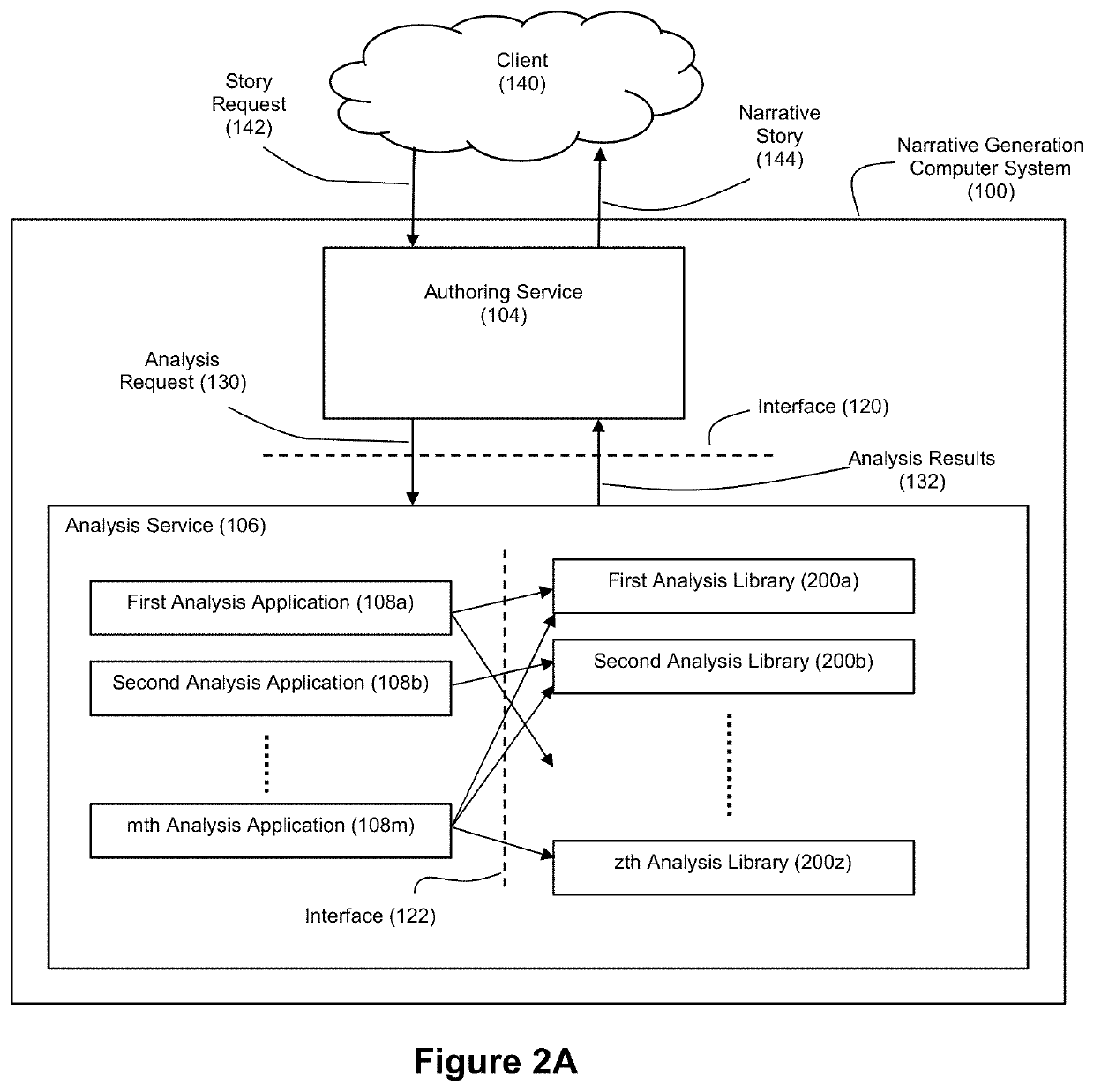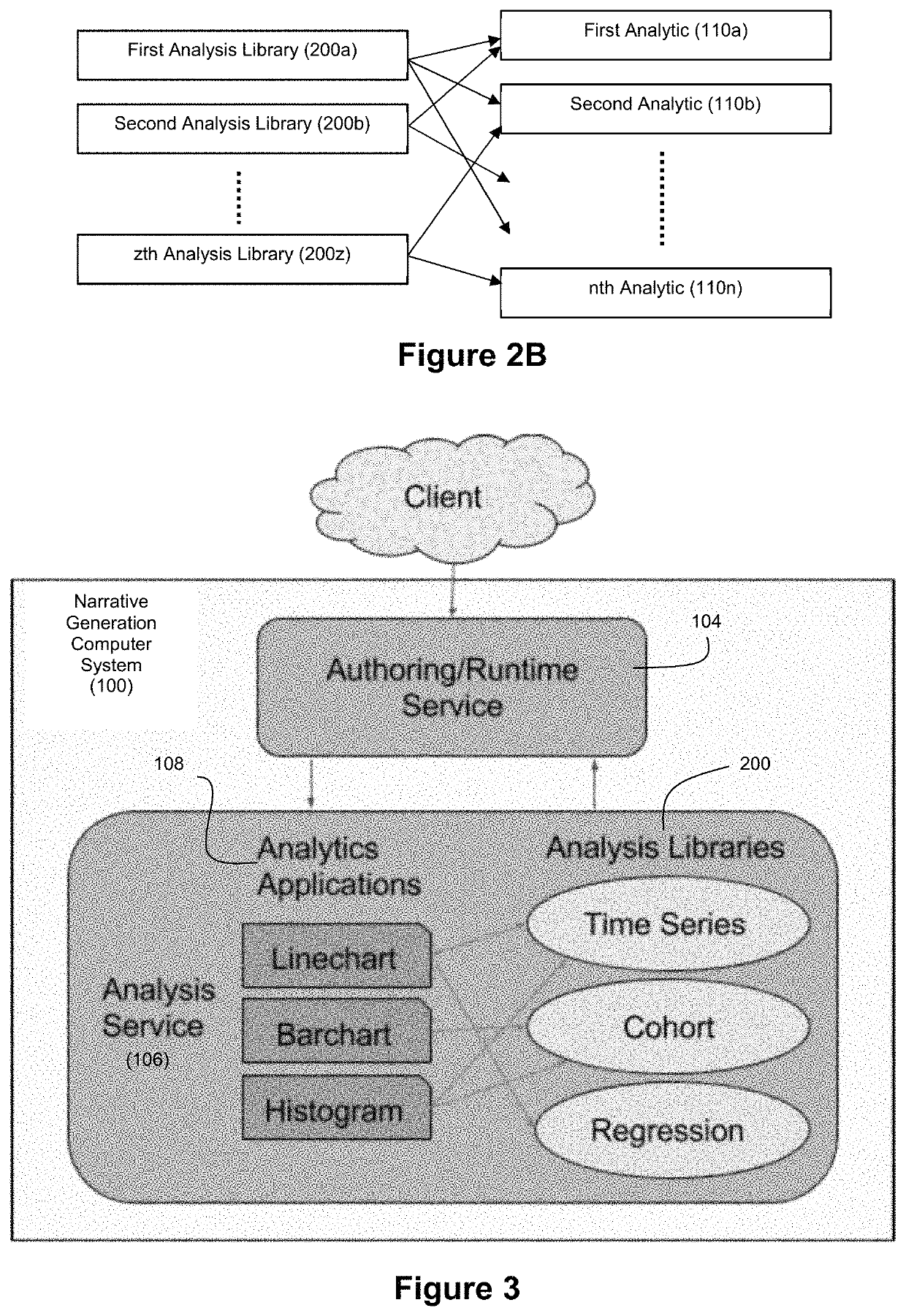Applied artificial intelligence technology for narrative generation using an invocable analysis service and data re-organization
an artificial intelligence and narrative technology, applied in visual data mining, web data retrieval, instruments, etc., can solve problems such as shortcomings and limited ability to analyze data sets to determine conten
- Summary
- Abstract
- Description
- Claims
- Application Information
AI Technical Summary
Benefits of technology
Problems solved by technology
Method used
Image
Examples
Embodiment Construction
[0036]FIG. 1 shows an example narrative generation computer system 100 that employs an authoring service 104 and an analysis service 106 that are separated via an interface 120. The narrative generation computer system 100 can generate a narrative story 144 for a client 140 in response to a story request 142 from the client 140. Client 140 can be a client computer that communicates with the narrative generation computer system 100 via a network such as the Internet, although this need not necessarily be the case. For example, client 140 could also be a client application that is executed by the same computer system that executes the authoring service 104 and analysis service 106
[0037]The client 140 can provide a story request 142 to the narrative generation computer system 100 to trigger the generation of a narrative story about a data set such as a set of structured data. The story request 142 can include the structured data. It should also be understood that the structured data ne...
PUM
 Login to View More
Login to View More Abstract
Description
Claims
Application Information
 Login to View More
Login to View More - R&D
- Intellectual Property
- Life Sciences
- Materials
- Tech Scout
- Unparalleled Data Quality
- Higher Quality Content
- 60% Fewer Hallucinations
Browse by: Latest US Patents, China's latest patents, Technical Efficacy Thesaurus, Application Domain, Technology Topic, Popular Technical Reports.
© 2025 PatSnap. All rights reserved.Legal|Privacy policy|Modern Slavery Act Transparency Statement|Sitemap|About US| Contact US: help@patsnap.com



